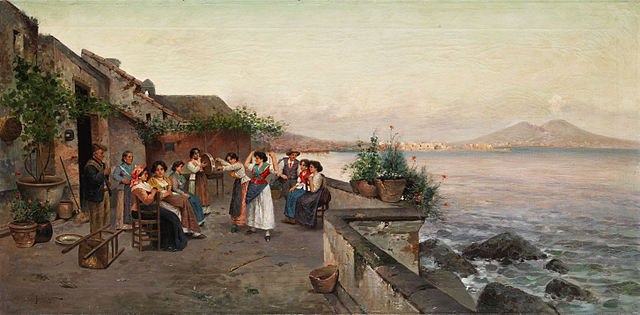 Many balletomanes may believe they know of the Tarantella through iconic American choreographer George Balanchine. However the dance, as a wild folk dance of Italy, was once believed to be a cure for tarantula bites, characterised by a fast, upbeat tempo and accompanied by tambourines.
Many balletomanes may believe they know of the Tarantella through iconic American choreographer George Balanchine. However the dance, as a wild folk dance of Italy, was once believed to be a cure for tarantula bites, characterised by a fast, upbeat tempo and accompanied by tambourines.
Balanchine’s Tarantella showcases the nimble quickness of the dance and is a virtuosic display in the profusion of steps and quick changes of direction. The origins of the Tarantella are not dissimilar to the display by Balanchine, with the belief in the 16th and 17th centuries that the victims of tarantula bites must perform a frenzied dance to swear the poison out to prevent death and the hysterical condition known as tarantism using very rhythmic music. Today, the Tarantella is simply a dance in which the dancer and the musician constantly try to upstage each other by dancing or playing longer or faster than the other in order to tire the other out.
The first Tarantella dance originated in the Apulia region and spread out across cultures. As a result, the Neapolitan tarantella is a courtship dance performed by couples and featuring cheerful and increasingly faster music, and it is thought that its origins lie in the 15th century fusion between the Spanish Fandango and the Moresque’ballo di sfessartia, with the Tarantella becoming a solo dance.
Notable tarantellas include those in classical music such as that by Benjamin Britten, Sergei Prokofiev, Pyotr Ilyich Tchaikovsky, Frederic Chopin, Claude Debussy, Franz Liszt, Camille Saint-Saens and Igor Stravinsky, in literature: a performance of the dance was central to Henrik Ibsen’s play A Doll’s House, and in film: The Godfather I and II, the musical version of Peter Pan danced by Captain Hook and his band of pirates, referenced in Harry Potter and the Chamber of Secrets and the Fairy Godmother’s song from Disney’s Cinderella is also a tarantella.
Image courtesy of Wikimedia Commons.
